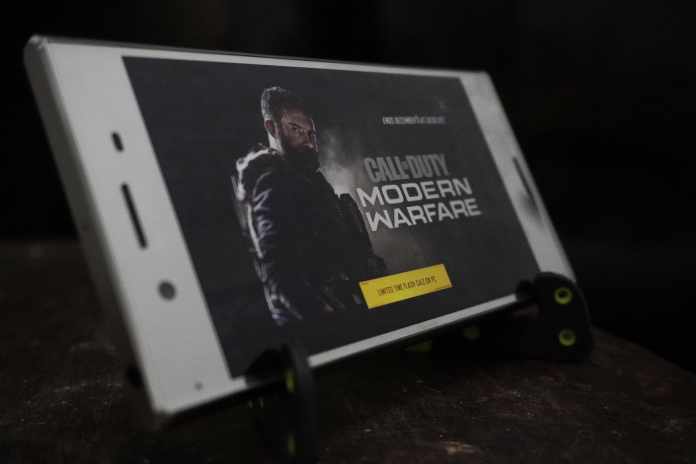Table of Contents
A juggernaut of the video game industry, the Call of Duty series has shipped more than 300 million units worldwide. Starting off with a small team of developers back in 2003, nobody could’ve seen it joining the likes of Pokémon and Super Mario in sales numbers further down the line.
So what has the evolution of Call of Duty been like over the years? How has it transformed from your standard WWII first-person shooter into a titan of gaming? Whether you’re an avid Zombies player or an active combatant in Warzone, you have formed a part in Call of Duty’s evolution. Let’s investigate how the franchise has changed since its inception.
The early days
Development for the first Call of Duty began in April 2002 by a new studio of 27 employees, Infinity Ward. The campaign, set in World War II, portrayed the horrors of the conflict through the eyes of the Americans, British and Soviets. The development team wanted to focus on fighting as a group alongside friendly soldiers, with battles taking place on Normandy beach (D-Day), over the Caen Canal, and in Stalingrad. A huge amount of research went into making sure the game was historically accurate with authentic weapons, vehicles and other resources.
Multiplayer consisted of 16 maps, supporting up to eight players. Playable characters included the Allied powers of the Americans, British or Russians facing off against the Germans. Through its research, Infinity Ward was able to tailor each side’s strengths and weaknesses based on actual historical differences.
The game was released in October 2003 exclusively for PC. A follow-up, Call of Duty 2, was announced in April 2005 and launched in the autumn of that year. This marked the first of the franchise to be released on console – acting as a launch title for the Xbox 360. A mobile version was released in January 2006, the first in the series. The game’s campaign again focused on the Allied powers, while the PC multiplayer was expanded to 64 players (limited to eight on Xbox).
Developer rotation
The first spin-off of the franchise, Call of Duty 2: Big Red One was released in November 2005 on GameCube, PlayStation 2 and the original Xbox. This was developed by Treyarch, who went on to release their first game of the main series, Call of Duty 3, in November 2006.
This would spawn the beginning of the ‘development cycle’ for the Call of Duty franchise. From here, the development of each annual title would alternate between Treyarch and Infinity.
A third developer, Sledgehammer Games, was added to the rotation in 2010. However, production for their first title for the main series was put on hold after a spat between publishers Activision and Infinity Ward led to top developers being fired. Sledgehammer Games was brought in to help Infinity Ward finish their 2011 title.
The Call of Duty franchise returned to a two-year development cycle in 2020 between Treyarch and Infinity Ward. It is thought that Sledgehammer Games will become a supporting developer as opposed to leading the development of future titles.
Shift to modern warfare
By the time development for Infinity Ward’s third title in the series came around, the team had grown to more than 100. With the new developer rotation in place, production for the game had taken place over the course of two years. After Call of Duty 2, Infinity Ward decided that its time in the World War II genre was up. It was time to try something different. Many of the original employees had actually worked on three games in the genre, having previously worked on Medal of Honor: Allied Assault.
After battling with a few new ideas, Infinity Ward settled on the idea of modern-day warfare. What this did mean, however, is that they had to tread lightly and avoid referencing real-world wars. Instead the campaign antagonists would include the fictional Imran Zakhaev, the leader of the Russian ultranationalist party, and Khaled Al-Asad, the commander of the revolutionary forces in the Middle East. The campaign would follow the British SAS and the United States Marine Corps as they fought throughout Russia and the Middle East.
Call of Duty 4: Modern Warfare was released across all platforms in November 2007. It would spawn two sequels; Call of Duty: Modern Warfare 2 in 2009 and Call of Duty: Modern Warfare 3 in 2011. The Modern Warfare series was rebooted in 2019 with a more realistic tone.
However, the series has drawn huge controversy, especially for its graphic content in its second installment. Modern Warfare 2 features a mission, ‘No Russian’, where the playable character takes part in a mass shooting at an airport. Players were given the option to skip to the next mission without being penalised.
Zombies
Treyarch’s second installment in the main series, Call of Duty: World at War took the game back to World War II. Released in November 2008, it came with a brand new game mode for the series, Nazi Zombies. The aim was simple: survive. Either solo or in a group of four, players must fight against endless rounds of the undead.
The first map, titled ‘Nacht der Untoten’ (German for ‘Night of the Undead’), takes place in an abandoned airfield in 1945 Europe. Equipped at the start with nothing except a knife, the player gains points for every time they fire and kill a zombie. As they progress, they can open up other rooms and are able to buy more impressive weapons off of the wall. The map also is home to the ‘Mystery Box’, where the player can spend 950 points to take a punt to get a rarer weapon.
Initially viewed as a fun little add-on, Nazi Zombies soon progressed into a franchise of its own. Treyarch released World at War’s first map pack in March 2009, with a new Zombies map, ‘Verrückt’ (or ‘Crazy’), an asylum in Nazi Germany. This was the first to include ‘perks’ to give players an added advantage over their undead foe.
Since 2008 there have been over 35 Zombie maps on all Treyarch-developed Call of Duty games. Infinity Ward and Sledgehammers Games have also chipped in with versions of Zombies in their Call of Duty titles.
Zombies has seen players travel in-game across the globe, from the Pentagon (‘Five’) to 1940s Japan (‘Shi No Numa’).
Futuristic settings
After venturing into the Cold War era in 2010 (Call of Duty: Black Ops), Treyarch was the first developer to take the franchise into the future. Call of Duty: Black Ops II was released in November 2012, with parts of the campaign taking place in 2025.
This was the first time players could get hands on with futuristic warfare technology, and the first of many to venture into the future. The game even shifted toward interplanetary combat in Infinity Ward’s 2016 Call of Duty: Infinite Warfare, set in the distant future. With this advanced technology, gamers were able to double jump and run along walls .
Return to World War II
With fans growing tired of the advanced movements that came with the futuristic Call of Duty games, Sledgehammer sought to bring the franchise back to its root; ‘boots on the ground’. Call of Duty: WWII, released in November 2017, was the first game in the series to take place during World War II. The campaign delivered a ruthless look at the war, not only covering the Normandy landings (D-Day) but other battles within German-occupied Europe (like Hürtgen Forest, the Bulge and Remagen). It also features a brutal look at the German concentration camps of the war.
Battle Royale
With Battle Royale (BR) games, such as Player Unknown’s: Battlegrounds and Fortnite, on the rise, it was only a matter of time before Call of Duty joined the scene.
Call of Duty: Black Ops 4 (2018) was the first game in the series not to feature a single-player campaign. Treyarch opted to only include Multiplayer, Zombies and their new BR mode, ‘Blackout’.
Blackout takes on the traditional BR style: 100 players scavenging for loot while a circle narrows the map’s playable area. Last player or team to survive wins the game.
Call of Duty: Warzone
Following on from Blackout, and the continued success of the BR genre, Infinity Ward released Call of Duty: Warzone in March 2020. Its release could not have been better timed as countries worldwide were going into lockdown as a result of the coronavirus pandemic, and gamers descended on the fictional city of Verdansk.
Supporting over 150 players, the success of the free-to-play game saw it integrated into the most recent Call of Duty: Black Ops Cold War, developed by Treyarch. A second, smaller map, Rebirth Island, was introduced in December 2020 supporting 40 players per match.
Since its launch, Warzone has surpassed more than 85 million players.
Summary
Over the years, the Call of Duty games have been met with varying degrees of success, both commercially and in their reception from fans. The video game franchise has continued to adapt to gamers’ needs.
The evolution of Call of Duty is exactly what has kept the series going for so long. While some aspects have received its criticism, if a publisher were to continually pump out the same thing every year gamers would get bored and sales would suffer. One thing’s for sure, while the franchise will continue evolving going forward, it certainly isn’t going anywhere anytime soon.









